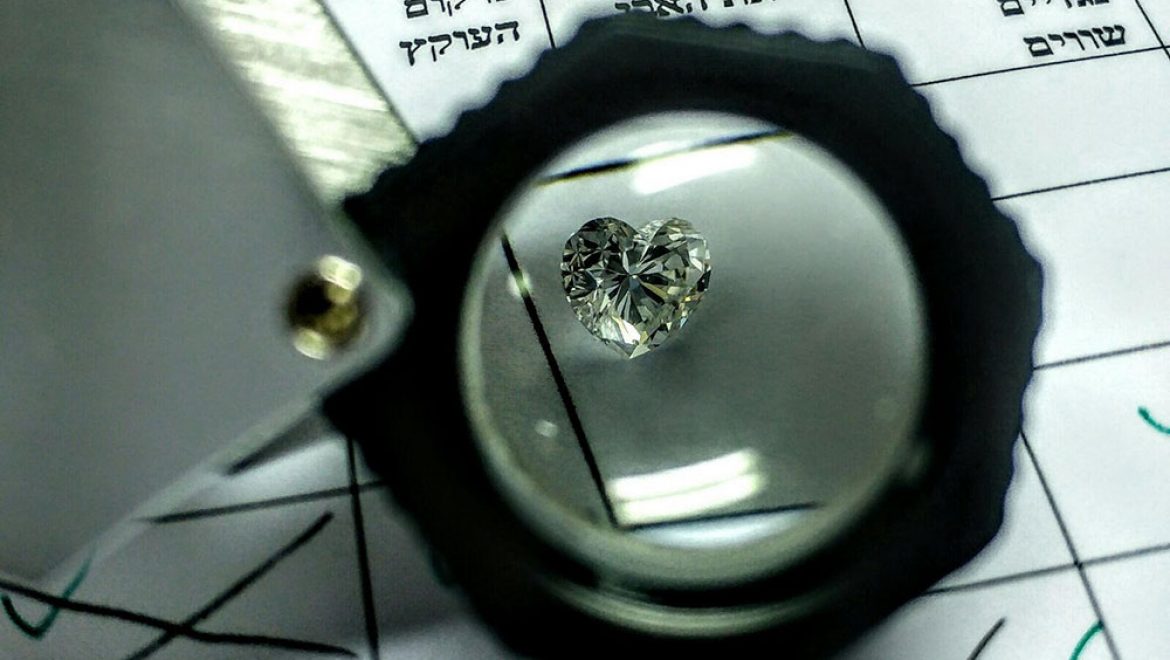What are graining lines in the diamond? how do they effect the clarity, the quality and the color of the diamond?
Graining Lines in the diamond, are a natural part of the diamond. They affect the clarity and the quality of the polish. The GIA note them in a comment in the Gemological certificate. There are two types of graining lines:
1. Surface Graining Lines:
These are natural lines in the stone, and they are a natural part of the stone’s structure. As the name implies, these lines can only be on the surface, or they can penetrate the stone a little. When they are on the surface they can be polished out of the stone, but if they penetrate the stone then you cannot fix them. They can appear as one line, or as several lines, either straight or in a half-circle.
The surface graining lines have 2 effects on the diamond:
- On the clarity:
The clarity can be affected to I.F.
- On the polish:
The direction that you polish the diamond has no bearing or effect on the lines. Therefore it is very difficult to polish a stone with surface graining lines. This problem gave rise to the nick-name “patience lines” – because the people who do the polishing need a lot of patience in order to polish these stones.
The differences between surface graining lines and polish lines are:
– Polish lines are thinner, more crowded together, and they always appear in the direction that you polish the stone. They do not cross facets.
– Surface graining lines are thicker and not so close together and do not appear in the direction that the stone is polished. They do cross facets.
How to mark surface graining lines on a gemological certificate:
Surface graining lines should be marked in green, like this: _ _ _ _ _ _.
However usually they are not marked, instead, a remark will be written e.g. “Surface graining is not shown.” This means that there are surface graining lines in the stone, but they are not marked in the certificate.
2. Internal Graining Lines:
Internal graining lines are an optical phenomenon in the stone. When you tilt the stone they seem to disappear or change shape.
When the clarity grade of the diamond relies only on internal graining lines that exist in the stone, nothing will be plotted in the certificate, only a remark will be written: “Clarity grade is based on internal graining that is not shown”.
There are 4 types of internal graining lines:
- Phantom Graining lines
These are translucent lines which appear in most diamonds. Their effect on the clarity of the diamond is usually from I.F. to VVS2
- Colored Graining lines
These lines usually appear in a brown color. If they are seen only from the pavilion their effect on the clarity is in the VVS area. If they are seen from the pavilion and from the crown they give the stone a light brown color and their effect on the clarity is in the VS area. They very rarely appear in a pink or purple color, but when they do appear in this color they tend to give the stone a fancy pink or fancy purple color, and this makes the stone much more valuable.
- Whitish Graining lines
If they are seen only from the pavilion their affect on the clarity is in the VVS area. If they are seen from the pavilion and from the crown they can give the stone a cloudy look, and their affect on the clarity will be in the VS–SI area.
- Reflective Graining lines
These are very rare lines, usually seen only from the pavilion and their affect on the clarity will be in the VVS area.
Would you like to learn more about diamonds? You can approach the Center of Gemological Studies and register to the most prestige, affluent and respected gemology course in the Israeli Diamond Center.
Hadas Dori Bar Moshe also lectures about diamonds in her lecture: The Secrets of the Diamonds.


